Can snowblowers be stored outside? Do you ask yourself this question every year? Even when you know a few tips on proper snowblower storage for your tools and equipment, this task seems to remain a problem every single season. But, not anymore!
We have prepared a step-by-step guide on managing to store your snowblower. Let’s get started.
Contents
Storing Snow Blowers: Step-by-Step
So you have successfully used your snow blower and now you need to store it for the winter. Here are some tips on how to do just that!
Clean off your Snowblower
Cleaning your snowblower is one of the most important steps in preparing it for storage.
Here’s how to do it:
- Remove the spark plug and gas cap.
- Put a cloth under the chute and remove any snow inside the machine.
Inspect your Snowblower for Damaged Parts
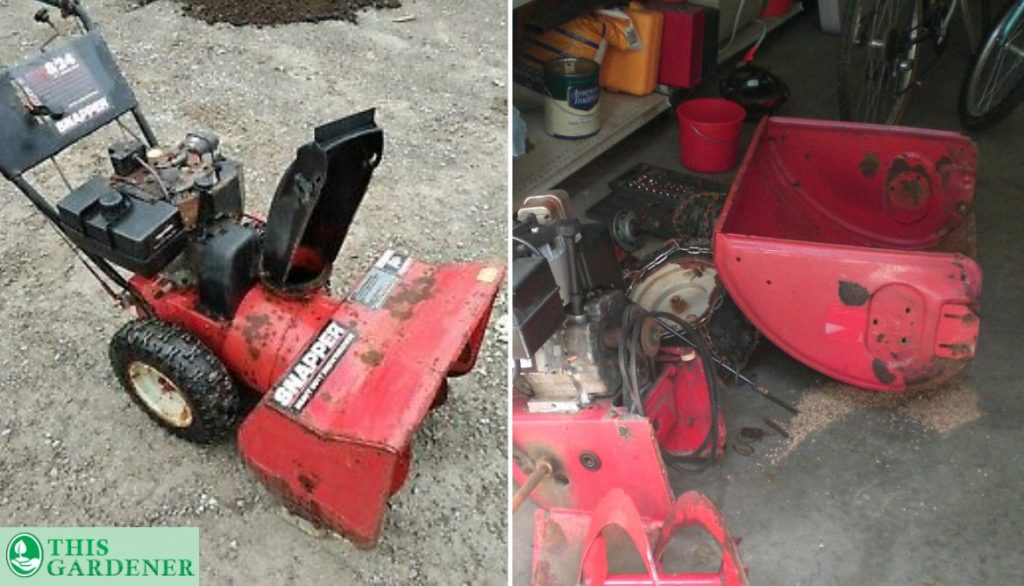
- Before storing your snowblower, inspect the machine for any damaged parts.
- If you find that your snowblower has a damaged part, don’t wait to get it repaired. You could damage it even more if you try to fix it yourself and end up breaking something else.
Change the Oil
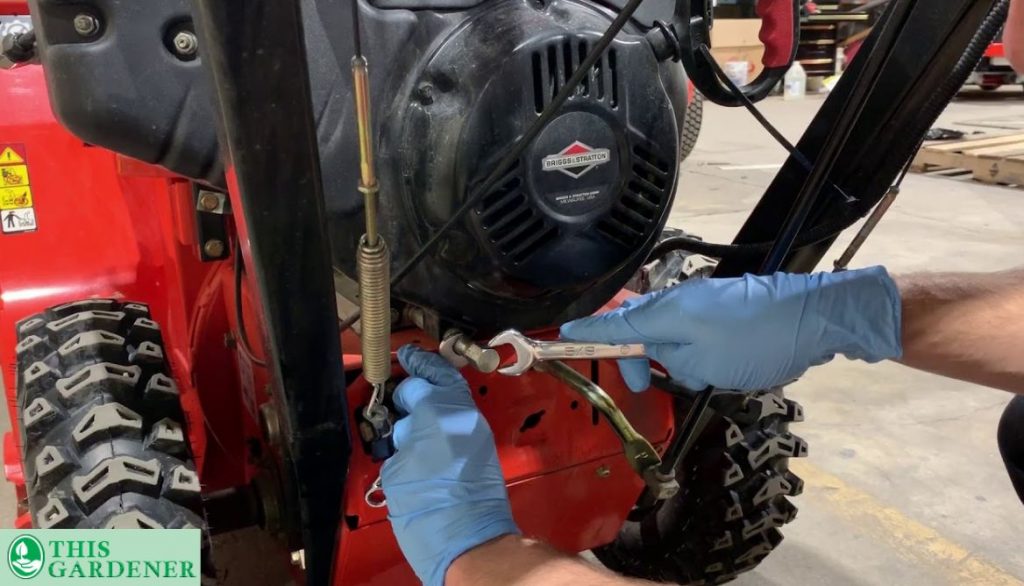
Changing the oil is really not as hard as it seems! All you need to do is follow these simple steps:
- Remove the oil filter from the gas engine by unscrewing it from the housing with a wrench.
- Never use pliers or a screwdriver to remove or install an oil filter!
- Add new engine oil to the snowblower’s reservoir using a funnel and funnel cap that came with your snowblower purchase.
- Fill the reservoir until it is about half full; this will be enough to cover all of your engine’s moving parts.
Drain the Gas
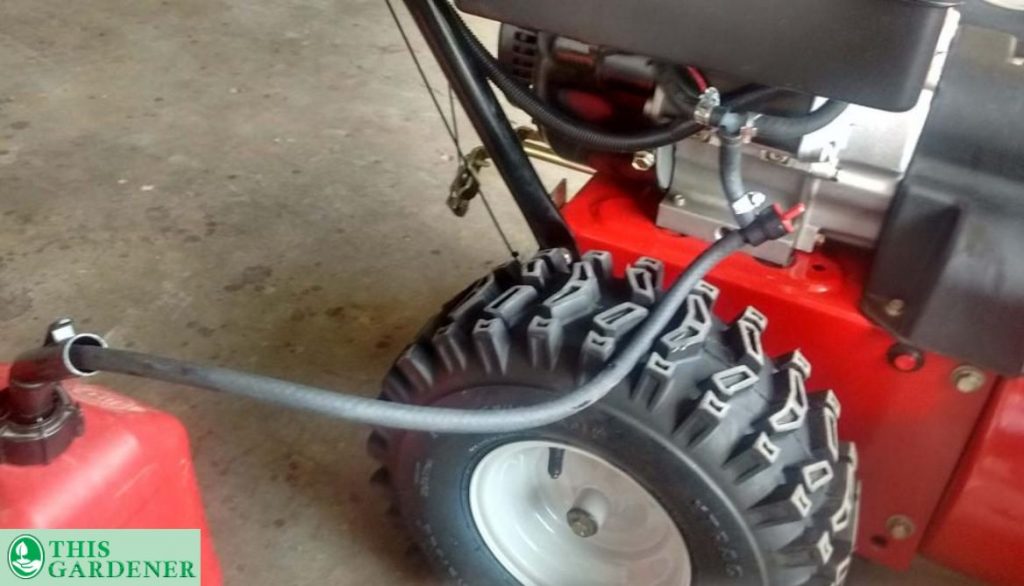
Storing your snow blower is an important step in winter maintenance, and it will require you to drain the gas from the machine before storing it.
Here’s how to do it:
- Remove the spark plug wire from the spark plug hole on top of the snowblower.
- Park your snowblower in an area that is not exposed to direct sunlight or heat, such as under a tree or in a garage or storage shed with solid walls.
- Turn off the power source to your snow blower by unplugging it from its electrical outlet or switching off the breaker panel inside your home or business.
- Clean any debris out of the snow blower‘s intake port using a brush or compressed air tool (not recommended for use on plastic parts).
- Drain all gas from the engine into an appropriate container (such as an empty automotive fuel tank), then dispose of this container safely according to federal, state, and local regulations.
Use a Rust Preventative
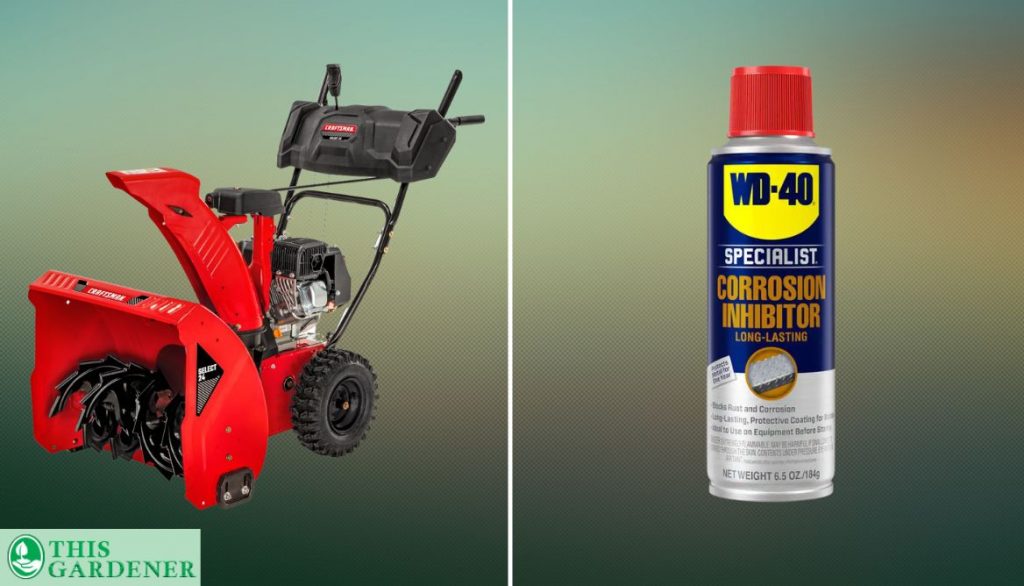
Rust is one of the biggest issues when it comes to storing snow blowers. If you’re storing your snow blower for any length of time, use a rust preventative to avoid rust from forming on the components and pieces of your snow blower.
Protect the Machine by Using a Snowblower Cover
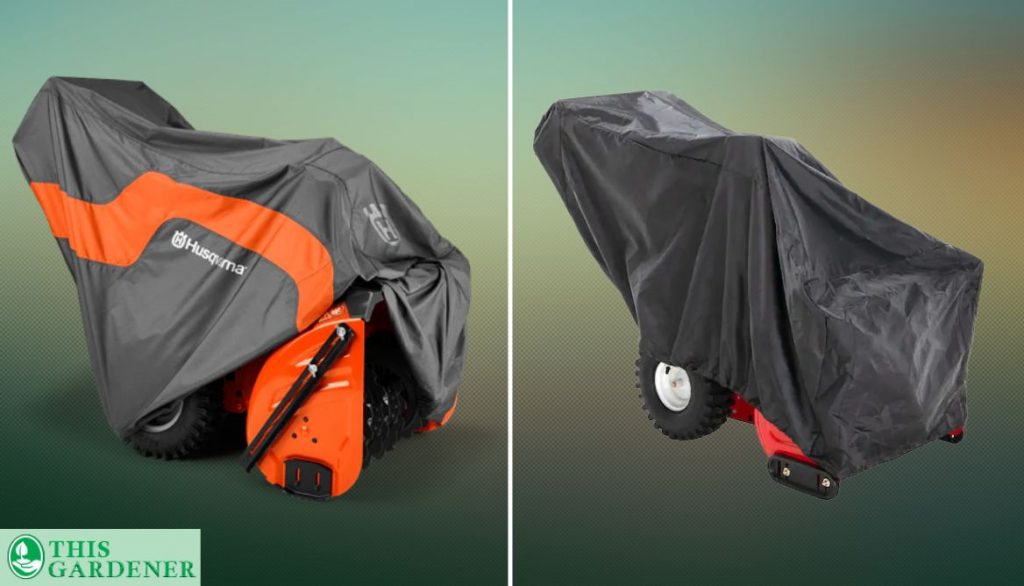
When storing your snow blower, you should ensure that it is protected from the elements and that there are no leaks. A snow blower cover is a great way to keep your machine safe during winter.
Find an Appropriate Garage or Storage Shed Spot Outdoor
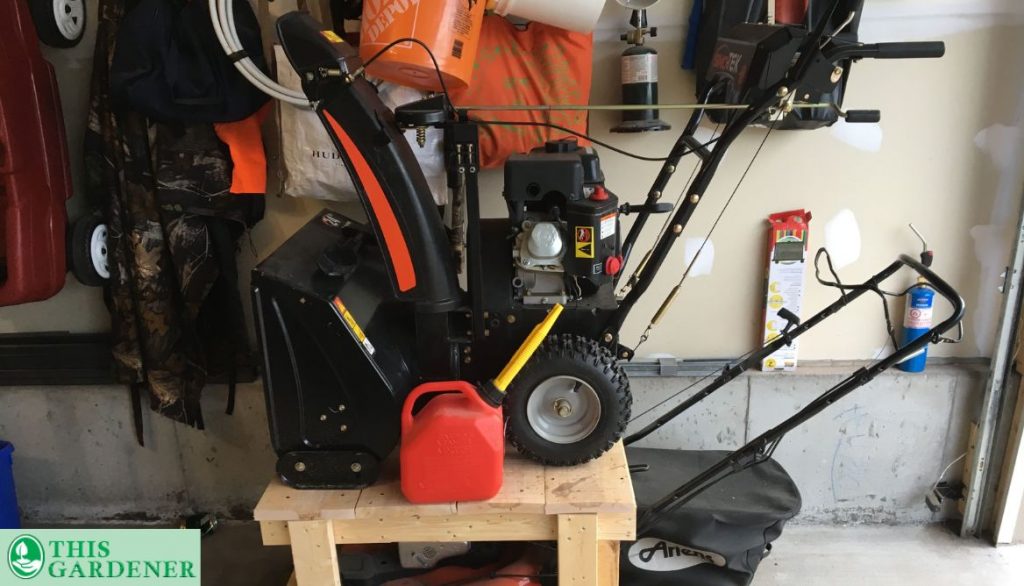
If you live in the United States, chances are you’ve got many options for storing your snow blower. There are many ways to store it—in your garage, shed or outbuilding, or even on your driveway.
Consider a Mini Shed / Container
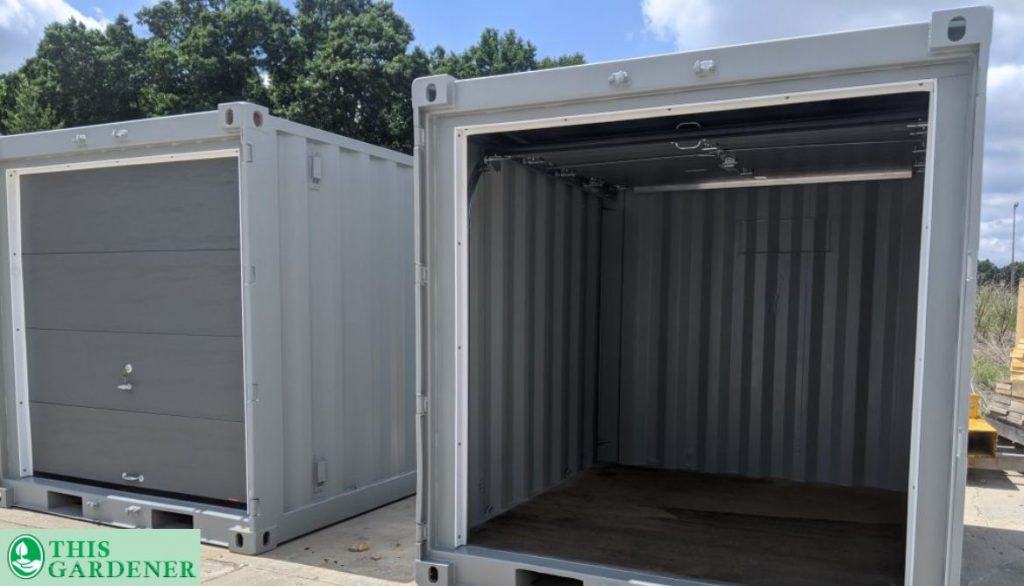
If you’re looking for a place to store your snow blower, consider a mini shed/container. They’re the perfect size for storing your equipment and providing easy access for maintenance or repairs.
If you choose this option, you’ll need to be sure that there is enough space for the snowblower and all of its parts and accessories. You can also use this area to store other lawn equipment, such as lawnmowers or garden tools.
How to Prepare Your Snowblower for Storage
The hectic winter season is the best time to maintain your snowblower and keep it in good working condition for later off-season storage. We’ll teach you how to take care of your snowblower over the winter.
Touch Up Rust
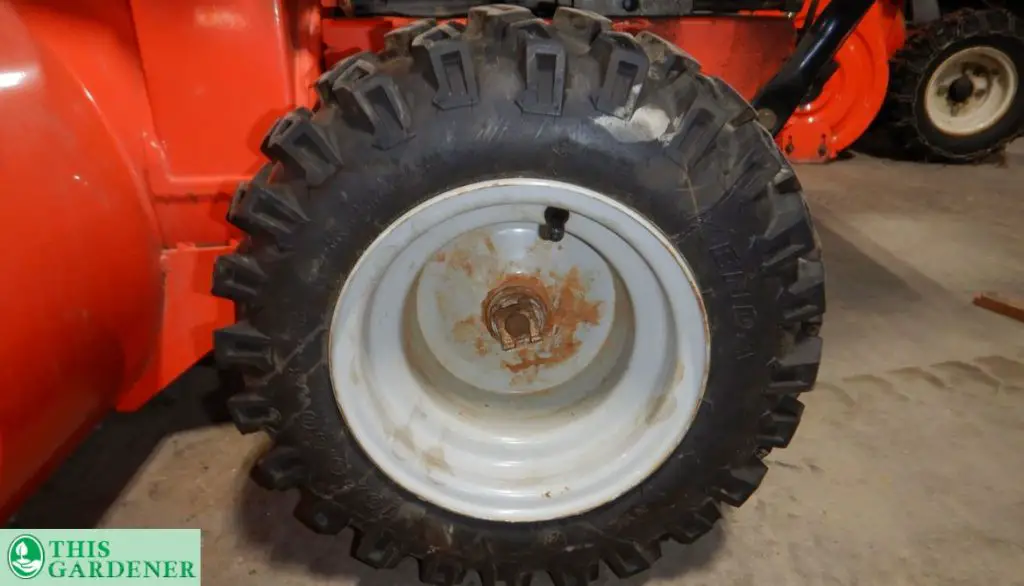
If you have a snowblower that’s been exposed to water or rain, rust can form on the metal. If you notice rust deposits on your snowblower, here’s what you can do to save it from being ruined:
- Wipe off excess water with a wet rag or sponge.
- Use sandpaper to remove any loose rust from your snowblower.
- Clean the area with acetone and steel wool to ensure no remnants of rust remain in the metal.
Secure Handles
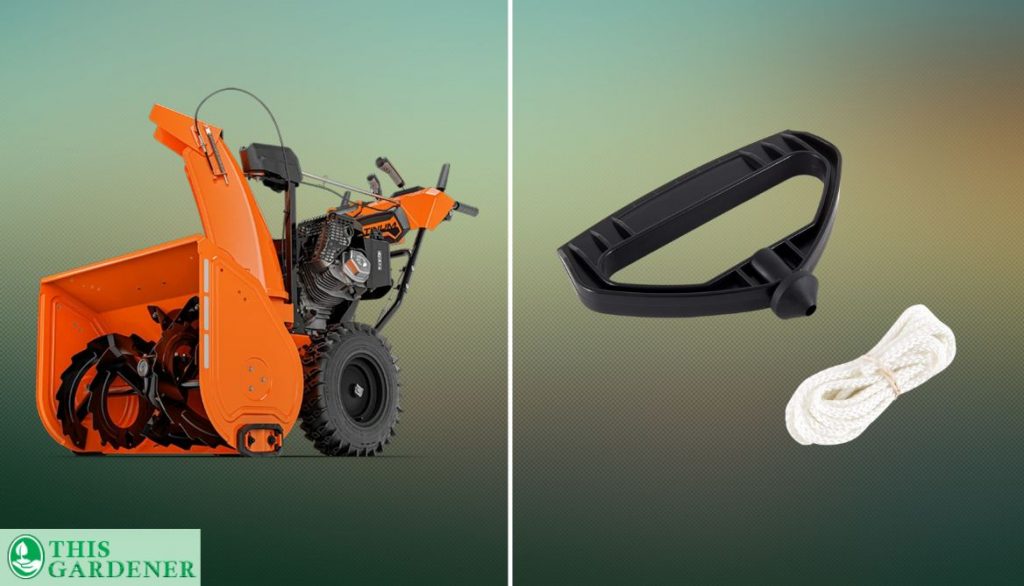
Before your snowblower is properly stored for the winter, ensure you secure all handles. This will help prevent anyone from accidentally starting the machine while it’s in storage.
Rust Prevention
It’s important to keep your snow blower in a dry, clean place. If the machine is not maintained properly, it could rust or corrode. To prevent this from happening, clean any snow accumulated on the machine before storing it away for the winter. Also, be sure to wipe down any surfaces where snow will accumulate.
Hand-Wash
Keep your snowblower clean in the snow season and ready for storage with simple hand-washing. Remove the wheel drive from the machine by removing the nut holding it.
Wipe down your snowblower’s exterior with a damp cloth to collect dust or any debris that may be on it. Clean the interior of your snowblower with a dry cloth to remove any excess dirt or moisture build-up that may be present inside.
Remove the Spark plug
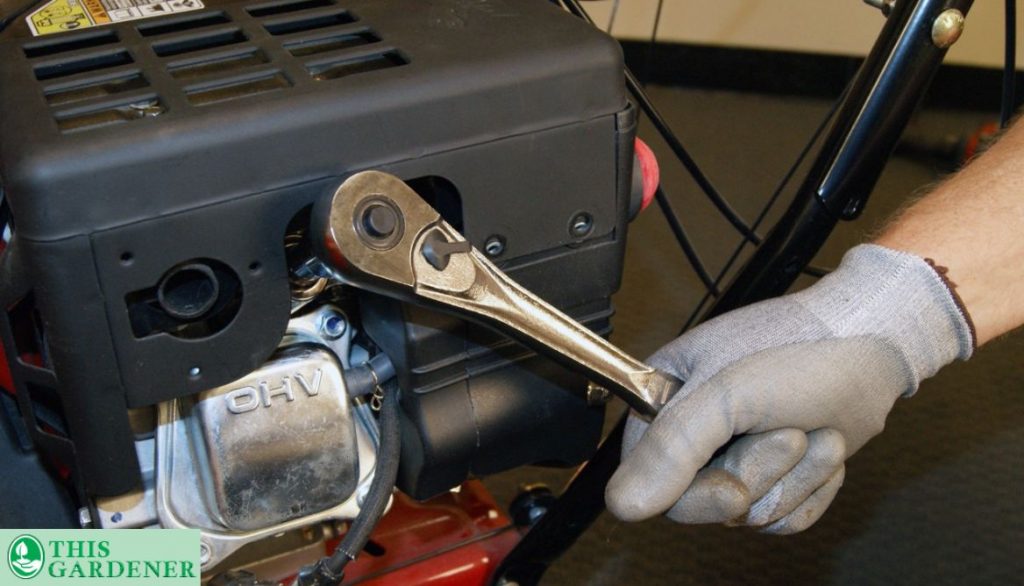
The plug on your snowblower is important to have working properly. Make sure you remove it before storing your snowblower in case you need to replace it.
Wrap It
Cover bare metal parts in a thick blanket to protect your snowblower from damage. Make sure that the blanket is not too tight. When you are finished using your snowblower, let it sit covered in your garage overnight to allow the oil to drain out of the machine.
Fuel
Your gasoline-powered snowblowers need to be filled with a fuel system before you store them. The carburetor must be cleaned and replaced when you take your snowblower out of storage. If you plan to store a snowblower for a long time, keep the fuel tank full of gas. You should also check the oil level in your machine before putting it away.
Fuel stabilizer
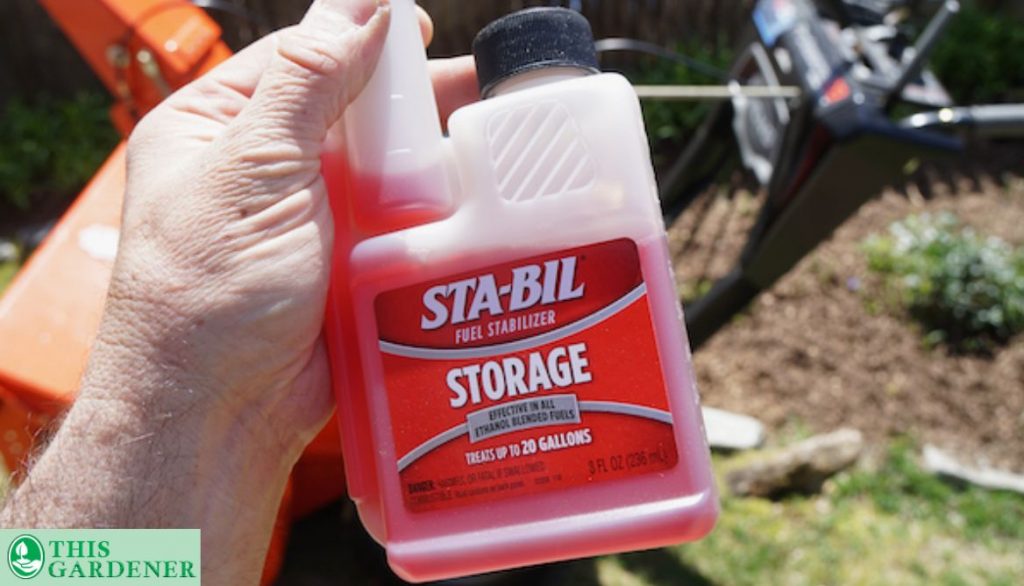
Clean out the fuel stabilizer tank cylinder wall and remove any remaining snow from the lines and filter. Remove the plug, clean it with a wire brush, and replace it.
Fill your gas tank with a fuel stabilizer until it’s full and then run the engine until all of the fuel lines have been consumed. Shut off the engine and let it sit for 5 minutes before draining all of the fuel stabilizer out of the tank.
If there is an excess fuel stabilizer in your gasoline, you can pour it down a drain.
Move Your Equipment to a Snowblower Storage Location
It’s not just that moving the snowblower outdoors out of sight frees up the space needed to keep it in use till next winter — it also allows you to make sure that it’s in good working order for the snow-blowing season so that people don’t get stuck in their driveways or sidewalks.
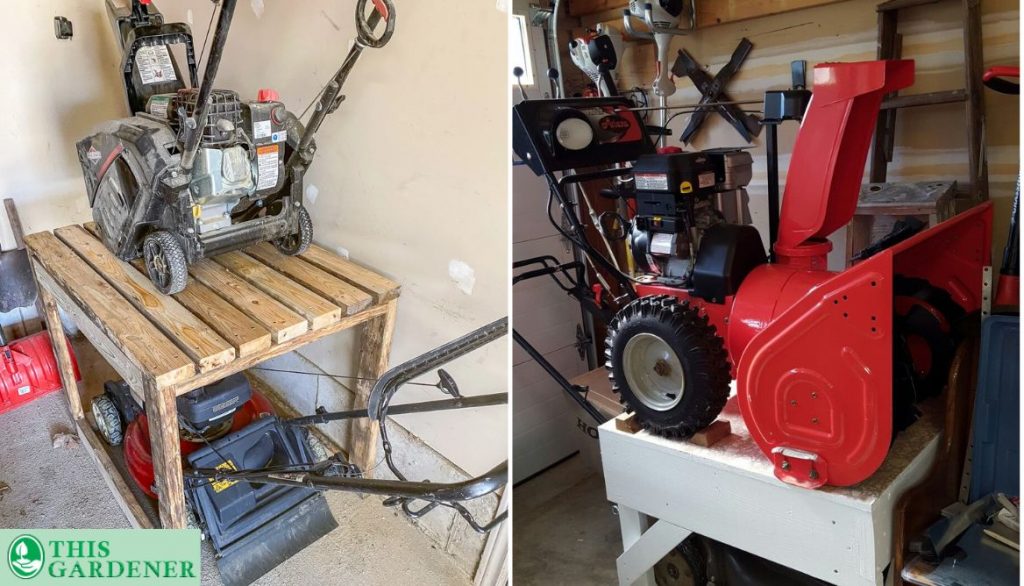
Cover Your Snowblower in Storage
If you’re looking for somewhere to store your snowblower, consider a Snowblower Storage Location.
Snow blowers are heavy, so it’s important that they are properly stored somewhere that is safe and secure. You don’t want a situation where your snow blower ends up being stolen from the storage unit or, worse yet, damaged.
This is why we recommend covering your snow blower in storage. It will protect it from the elements and keep the internal components in top condition for years to come.
Should You Store a Snowblower with or Without Gas?
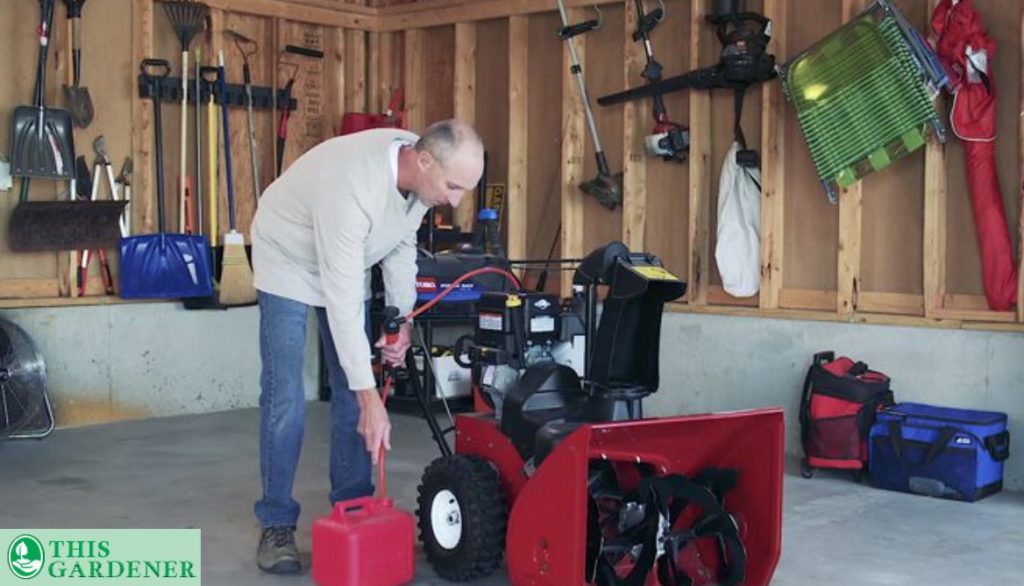
If you want your machine ready to go when you return from winter vacation, you should store it with gas inside the combustion chamber.
But if your main concern is that the draining gas tank will leak and fuel mix with exposed metal parts, then it’s better to store the snowblower without gas.
Storing a Snowblower in a Garage or Shed
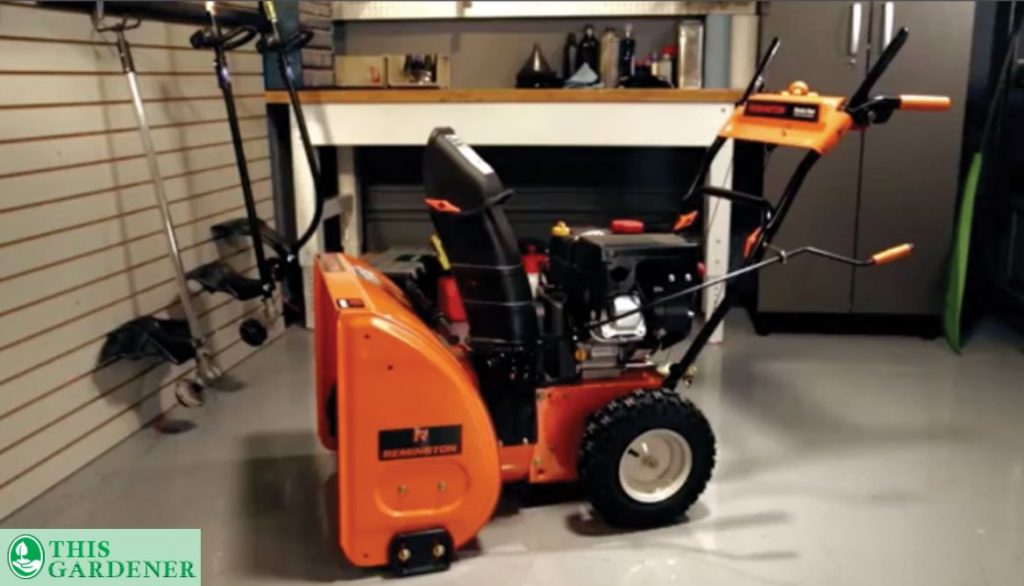
Whether you’re storing your snowblower in a garage or shed, it’s important to ensure it’s protected. There are many ways to do this, but one of the most common is using an insulated cover.
Some examples include:
- Drywall
- Metal sheets (like steel)
- Carpet (if it has padding)
- Plastic sheeting
Invest in a Snowblower Storage Shed
If you are thinking about buying a snowblower storage shed, you should think about investing in a storage unit for your snowblower. A storage shed is a great way to protect your snowblower from the elements and keep it safe.
A nice storage shed can also act as an extra workspace when you need it. It might seem like a lot of money, but it’s worth considering how much time you’ll save and how much space you’ll gain when you have a shed to store your snowblower.
Can Snowblowers be Stored Outside – FAQ
How should snowblowers be stored?
The best way to store a snowblower is in a shed or garage.
Does a snowblower need to be covered?
If you have a snowblower, you must store it in a snowblower cover.
Can snowblowers freeze up if its too cold?
Yes, your snowblower can freeze up. However, this is not the same as the engine freezing up. When your snowblower freezes, you’ll hear a clicking sound in the engine, and stop working.
What is the best way to store snowblower for summer?
The best way to store your snowblower for warm weather is by wrapping it in a waterproof cover in a garage or shed.
Can you store a snow blower in a shed?
Yes, you can store a snow blower in a shed. But it’s important to note that the space needs to be large enough for the snow blower’s weight and height.
How do I keep my snowblower from rusting?
Clean and dry your snowblower every year during the off-season (or more frequently if it’s heavily used) by removing the engine and cleaning with a low-pressure hose or pressure washer.
Conclusion
We hope we’ve been able to answer your questions about storing snowblowers. If you want to make sure your snow blower is ready for the next winter season, just follow these simple steps and your equipment will be in good shape.
What are your favorite tips for keeping a snowblower in good shape? Reply with your best answer in the comments down below!
- How to Get Potatoes to Sprout Eyes: Detailed Growing Guide with 3 Options - July 31, 2023
- Weight of a Medium Potato: Revealed in Detailed Guide - July 29, 2023
- Maris Piper Potatoes: 9 Substitutes You Should Know About - July 27, 2023
Hello! I’m Jessica Zander, a garden coach and consultant based in the Boston area (zone 6b), offering virtual consultations across the country and Canada.
I’ve been passionate about gardening since the early 1990s, and in 2022, I launched You Can Do It Gardening to empower individuals to feel more confident in their gardening endeavors.
Following a 30-year career in nonprofit finance and operations, I transitioned out of that field in mid-June of 2023 due to the growing demand for coaching services. Interestingly, my years of presenting financial statements to boards and finance committees proved to be valuable experience for teaching people about gardening! I enjoy sharing skills, providing guidance and suggestions, and collaborating efficiently with clients to make significant improvements to their outdoor spaces, both small and large. I also regularly teach at the Arlington Continuing Education and Cambridge Adult Education.
My approach is direct and practical, akin to Mary Poppins, but tailored to your garden. Clients find satisfaction in saving money and taking pride in their own gardening achievements.

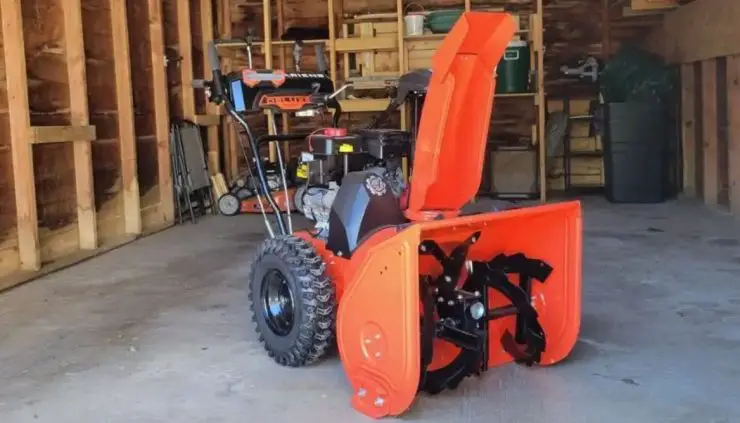
Add comment